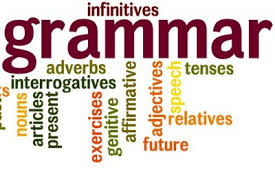 In a world whose globalized market means that the positive or negative evolution of one nation’s economy can have effects – sometimes devastating – across the planet, there is one industry that has continued to grow both in complexity and extension due to a seemingly never-ending demand for information sharing: the translation industry. Recent studies from Common Sense Advisory reveal that the translation industry is estimated to be worth over $33.5 billion globally, with predictions by some that it could reach $39 billion by 2018. In the US, this means some additional 12,400 jobs – a 36% increase – by 2019. The U.S. Bureau of Labor Statistics also predicts a whopping 46% percent growth between 2012 and 2022, far greater than the average 11% growth for all careers.
In a world whose globalized market means that the positive or negative evolution of one nation’s economy can have effects – sometimes devastating – across the planet, there is one industry that has continued to grow both in complexity and extension due to a seemingly never-ending demand for information sharing: the translation industry. Recent studies from Common Sense Advisory reveal that the translation industry is estimated to be worth over $33.5 billion globally, with predictions by some that it could reach $39 billion by 2018. In the US, this means some additional 12,400 jobs – a 36% increase – by 2019. The U.S. Bureau of Labor Statistics also predicts a whopping 46% percent growth between 2012 and 2022, far greater than the average 11% growth for all careers.
Two factors are driving this exponential growth, and both seem to be long-term trends: businesses expanding to new markets abroad, and increased immigration
With this increasing demand for translators, it’s logical to ask how exactly does one become a translator.
Most translators arrive at their profession via two main paths: education or practical experience.
More and more universities are offering degrees or professional certificates in translation (or translation and interpreting), and there are also, of course, the traditional on-campus programs as well.
Another option, and one that is actually quite common, is to use the experience gained from working as a professional in another field – law, architecture and medicine are common – and apply it to translation work.
Speaking a second language, though, is not enough: Regardless of the path chosen, there are requirements that any translator must meet, and these include native-level language ability in the language you wish to translate into (professional translators generally translate into their native language only); an outstanding knowledge of the foreign language you are translating from, including cultural nuances; excellent writing skills (you must be able not only to understand the source text, but also replicate its style and register); analytical skills (to understand what you read); research skills (for terminology); and IT skills (technology plays an increasingly important role in today’s translation industry, and is key to an efficient business operation).
And there’s another personality trait that can make you a top-level translator: curiosity. Curiosity drives the translator to learn new skills, look up unfamiliar words, research unfamiliar subjects and, in general, to nose around the topic of the translation at hand until he not only understands the words in the translation, but the concept as well.
Most translators work as freelancers; in the US, earnings average about $45,000 a year. However, depending on the language combination (translating from French into Chinese, for example, commands a higher rate than translating from Spanish into English) and the industry (a local community center or a Fortune-500 company), salaries can run into six figures.
One downside to the industry is the fact that there are few official standards that place limits on who can call themselves a translator, and few official bodies that certify translators (the main body in the US is the American Translators Association). As a result, the industry has been flooded with amateurs who attempt to compete with professionals, which makes degrees and certifications invaluable tools when offering translation services.
The exponential growth of the translation industry has opened the door to language lovers who have the skills and knowledge – and are willing to expend the time and effort to develop them to their fullest potential – to create communication bridges worldwide, and translation professionals are always glad to welcome fellow professional translators into the world of multilingual communication.











